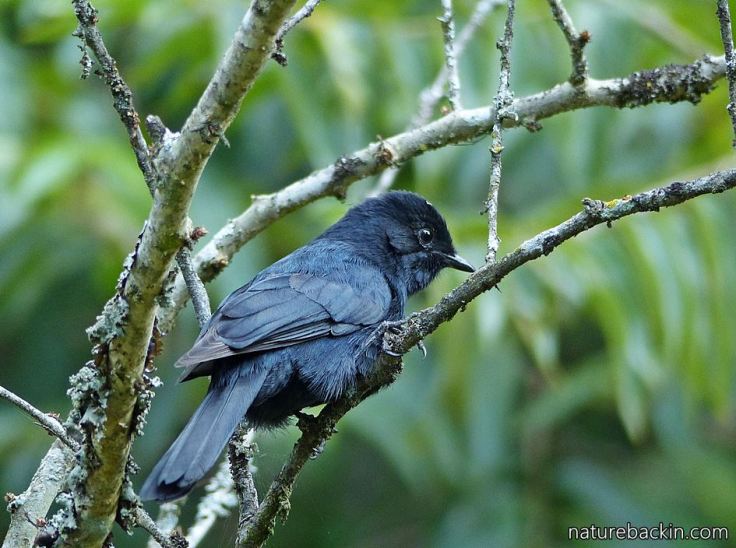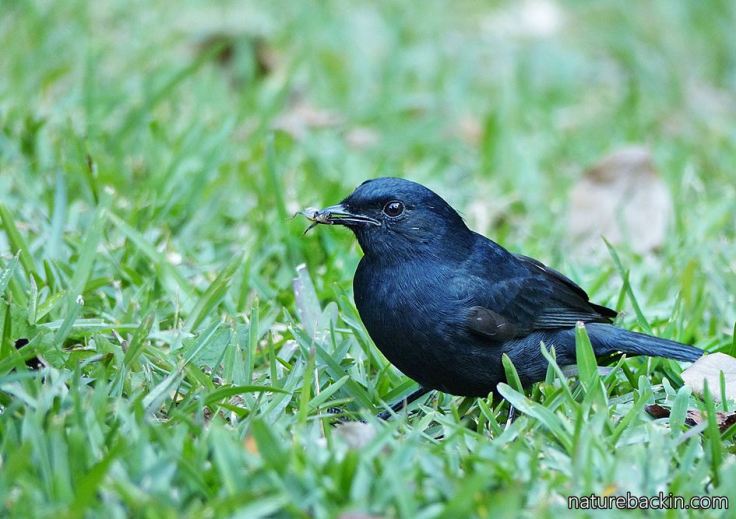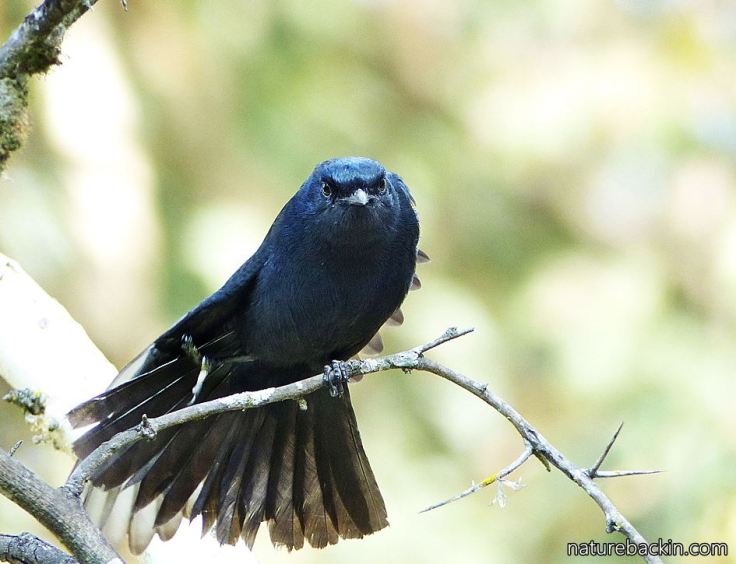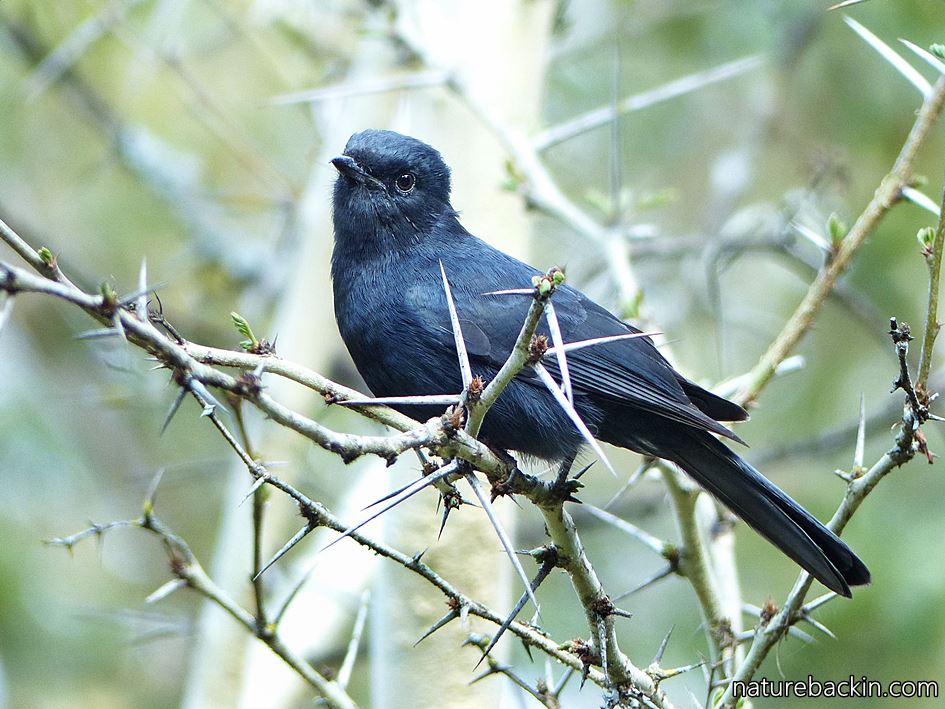Plucky and petite, Southern Black Flycatchers are one of the most engaging of the uniformly black birds that visit our garden.
They hunt by perching in the lower branches of small trees, or even from fences, and usually they forage in pairs or small groups of 4 to 6 birds. In our garden, as elsewhere, they often hunt in close proximity to the Fork-tailed Drongo, also a uniformly black bird.
From a perch a Southern Black Flycatcher watches intently for insects to catch, sometimes hawking on the wing or else landing on the ground and hopping forward to catch what it had spotted from the perch.

A Southern Black Flycatcher watching intently from its perch, ready to pounce

Constantly alert, this Flycatcher is scanning for prey from its perch low down in a Fever Tree

This bird swooped from its perch down to the ground to land a few hops away from catching this cricket in the lawn
The Southern Black Flycatcher occurs in the eastern and extreme northern parts of South Africa, as well as in other southern African countries and in Central Africa and East Africa. It occurs in various types of woodland, usually in proximity to open spaces. It is also found on the edges of plantations and in gardens. In addition to insects it also eats spiders, centipedes and worms, and nectar and berries from specific plants.

This bird decided to try hunting from a low piece of picket fencing

More commonly though I see them perching on a low branch in a small tree, usually near to an open piece of lawn

In between watching intently for its next meal, this bird passed the time spreading and stretching its wings …

… and spreading its tail. Note its right leg fully extended to the side as it stretches. Its expression here reminds me that though tiny and delicate, it is nevertheless a predator
Posted by Carol









February 17, 2018 at 4:47 am
A beautiful bird, and a lovely series of photos and descriptions.
LikeLiked by 1 person
February 20, 2018 at 2:14 pm
Thanks very much. They are such a alert presence in the garden.
LikeLike
November 12, 2017 at 9:14 am
Beautiful. It is a bit like a Blackbird in my garden in Ireland.
LikeLiked by 1 person
November 3, 2017 at 12:21 pm
Bringing out the beauty of this bird!
LikeLiked by 1 person
November 3, 2017 at 4:20 pm
Thank you so much Leya.
LikeLike
November 3, 2017 at 8:37 am
In the last shot he looks like a furious judge about to pass a salutary sentence on a miscreant!
LikeLiked by 1 person
November 3, 2017 at 3:29 pm
He certainly does look very imposing and a tad furious, though perhaps the stretched out leg rather undercuts the seriousness 🙂
LikeLiked by 1 person
November 3, 2017 at 5:19 pm
😂
LikeLike
November 3, 2017 at 7:30 am
Yes, I thought he seemed a wonderfully rich midnight blue too. And handsome with it.
LikeLiked by 1 person
November 3, 2017 at 3:25 pm
Handsome, but also somehow cute except when looking rather fierce 🙂
LikeLiked by 1 person
November 3, 2017 at 3:59 am
These are wonderful photographs! Uniformly black birds are not always easy to capture in such marvellous detail.
LikeLiked by 1 person
November 3, 2017 at 6:29 am
Thanks Anne. True what you say about photographing black birds – need to be lucky with the light.
LikeLike
November 2, 2017 at 11:24 pm
Excellent series.
LikeLiked by 1 person
November 3, 2017 at 5:57 am
So pleased that you like the pics – thanks.
LikeLiked by 1 person
November 2, 2017 at 9:14 pm
He looks midnight blue-black. Wonderfully detailed shots!
LikeLiked by 1 person
November 3, 2017 at 5:56 am
They are a very deep black. Midnight blue is a nice way to describe it. Thanks.
LikeLike